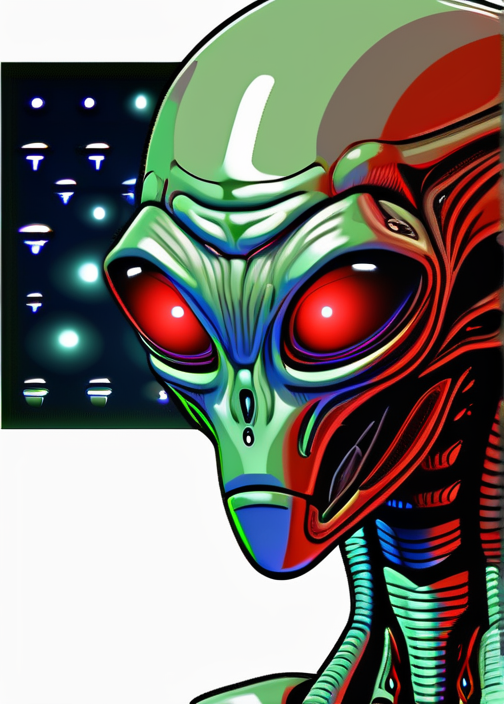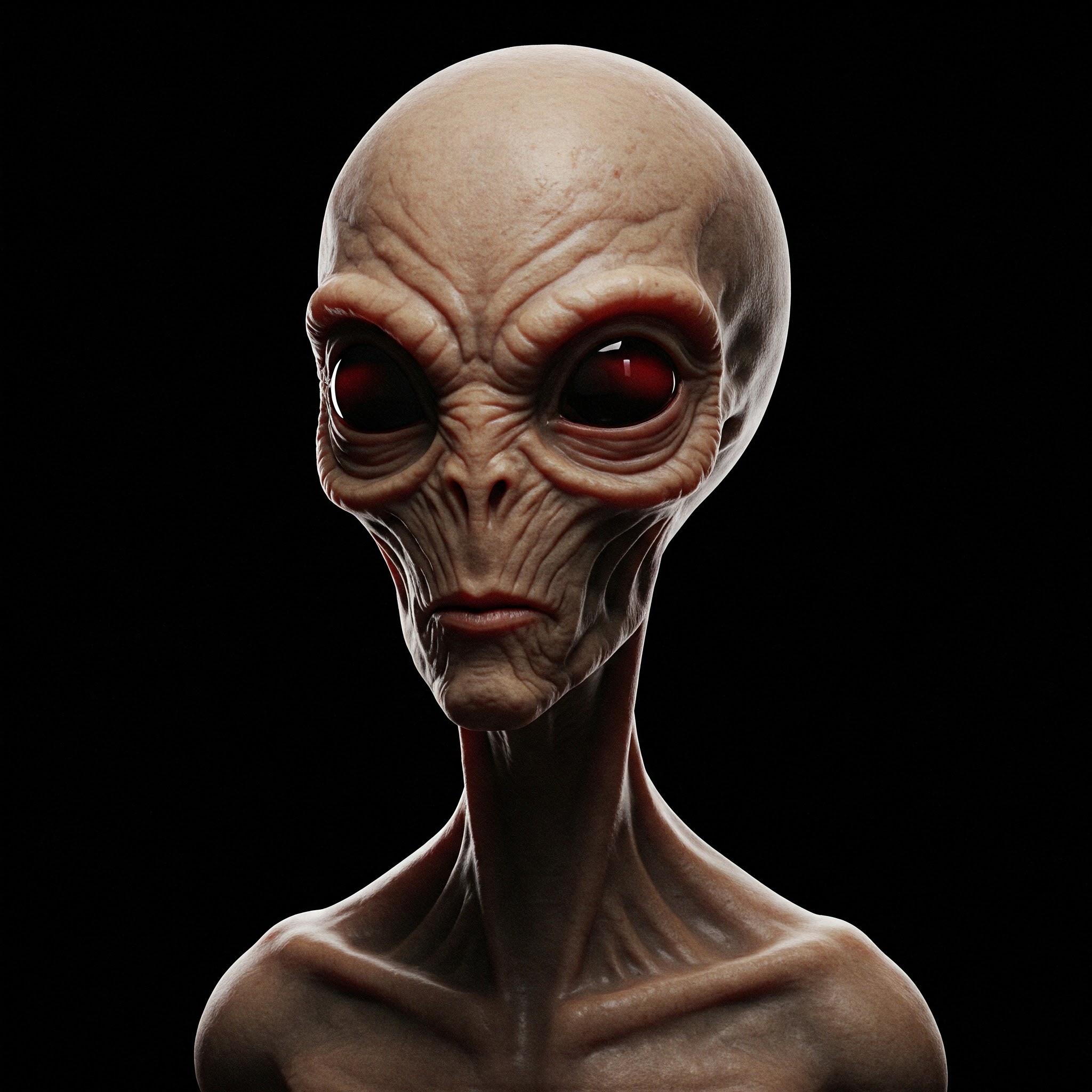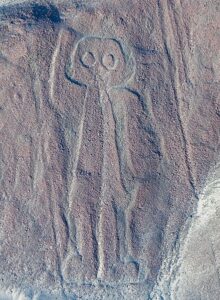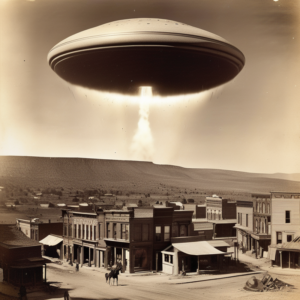The “Hesekiel Project” and the Theory of Four Alien Races that Have Been Accompanying Humanity Since the Dawn of Modern Man

Note: All illustrations of the alien speczies are purely speculative and only exemplary.
For centuries, stories of alien encounters have been passed down through history, but a new and intriguing study from the “Hesekiel Project” has brought new insight into these phenomena. The study, based on the analysis of thousands of reports from government officials, whistleblowers, and everyday witnesses, suggests that four distinct alien races have been interacting with humanity since the dawn of modern civilization.
The findings of the Hesekiel Project aim to categorize these encounters, providing a clearer picture of the different types of extraterrestrial beings that may have been influencing human history.
The Four Alien Races: Tall Whites, Greys I, Greys II, and Camos
- Tall White Aliens
Described as humanoid beings, the Tall Whites are said to stand around 6 to 7 feet tall, with pale white skin, white hair, and blue eyes. These beings are known for their advanced intelligence and technology. They are rumored to have made contact with the U.S. government in the 1950s, with many reports suggesting that they have played a behind-the-scenes role in global political developments. - Greys I
One of the most widely recognized alien species, the Greys I are often associated with reports of abductions and close encounters. These beings are typically small, with grey skin, large black eyes, and a slender physique. They are the most frequently reported alien race in contemporary UFO sightings and abduction claims. - Greys II
A less widely known, yet significant, race of Greys, the Greys II are similar in appearance to Greys I but with subtle differences. While still small and brownish grey in appearance, these entities are often described as more enigmatic and possess different behavioral characteristics. There is less documentation surrounding their interactions with humans, but they are thought to have been involved in more secretive and classified activities. - Camos
The Camos are described as a more mysterious race, with reports suggesting they are highly skilled in stealth and manipulation. Not much is known about their physical appearance, but they are believed to be capable of blending into human society undetected. The Camos are rumored to have had a covert role in various historical events, exerting influence from the shadows.
The Study: Thousands of Reports and Governmental Testimonies
The Hesekiel Project analyzed a vast array of testimonies—ranging from government reports to accounts from whistleblowers and private citizens. By examining both highly plausible and less likely accounts, the project has differentiated between various alien species based on frequency and consistency in the reports. These findings suggest that four different alien races have been accompanying humanity throughout history, interacting with us in ways both subtle and overt.
According to the researchers, the presence of these alien races could explain many unexplained phenomena, from advancements in human technology to unusual historical events. Despite the controversy surrounding these claims, the study presents a compelling case for the long-standing and complex relationship between Earth and extraterrestrial visitors.
Conclusion
While skepticism remains high, the Hesekiel Project’s findings offer a bold new perspective on extraterrestrial life. The theory that four distinct alien species have been interacting with humanity for thousands of years challenges conventional views on human history and the possibility of life beyond Earth. As further investigations continue, the project’s revelations may unlock new understandings of our past and our place in the cosmos.
The Tall White Aliens: An Analysis of Their Characteristics, History, and Interaction with Humanity

Abstract
The concept of extraterrestrial life has fascinated humanity for centuries, with numerous reports of alien encounters across the globe. One such species, commonly referred to as the “Tall White Aliens,” has been described in various accounts, especially in the context of alleged government interactions. This article explores the characteristics, potential origins, and controversial relationship between the Tall White Aliens and human civilization, based on reports from the mid-20th century. The paper also delves into the socio-political ramifications of their existence, touching upon the secrecy surrounding them and their possible influence on world affairs.
Introduction
The existence of extraterrestrial beings, particularly the so-called “Tall White Aliens,” has been a subject of intrigue and speculation. Described as humanoid entities with distinct physical traits and advanced technology, these aliens are believed by some to have had significant contact with human governments, particularly the United States. The information surrounding them suggests not only biological and cultural differences but also an intriguing history of interaction that may have shaped global politics and technology.
Physical Characteristics
Tall White Aliens are typically described as possessing a striking appearance that sets them apart from humans. Females are reported to stand at approximately 6 feet tall, while males can reach up to 7 feet in height. Their skin is described as pale white, accompanied by white hair and blue eyes. A distinctive feature of older individuals is the development of pink-colored eyes, which is thought to be a sign of aging or a physiological mutation.
These beings are believed to be nocturnal and exhibit a marked aversion to direct sunlight. Their skin and eyes are likely adapted to low-light environments, supporting the hypothesis that their homeworld might have significantly different environmental conditions from Earth.
Possible Hybridization with Humans
A particularly interesting aspect of the Tall White Aliens is the theory that they may have interbred with humans thousands of years ago. According to some reports, this hybridization likely occurred around 10,000 to 12,000 years ago, with blue eyes—once considered a mutation in humans—possibly being a result of this genetic mixing. The presence of blue eyes in modern humans has sparked ongoing debates about the potential extraterrestrial influence on early human evolution.
Government Allegations and Secrecy
The most contentious aspect of the Tall White Aliens’ existence centers on alleged interactions with the U.S. government. It is claimed that in the early 1950s, under President Dwight D. Eisenhower, a covert agreement was struck between the U.S. government and the Tall Whites. This agreement allegedly stipulated that the aliens would not reveal themselves to the general public, a promise they purportedly adhered to for several decades.
The secrecy surrounding these beings is believed to be tied to several concerns. First, there is the fear that the disclosure of the Tall Whites’ existence would cause a major societal upheaval. Such a revelation would likely challenge existing religious beliefs, as the presence of an advanced extraterrestrial species would force humanity to reevaluate its place in the universe. Furthermore, the disclosure could unite disparate human societies in a way that undermines existing power structures.
Impact on Global Politics and Technology
The Tall Whites are thought to have knowledge and technology far beyond that of contemporary human civilization. Among the key technologies speculated to have been shared with the U.S. government are advancements in energy production, space travel, and the manipulation of time and space. These technologies, if fully integrated into human society, could revolutionize global economies, significantly reducing humanity’s reliance on fossil fuels and altering the balance of power in the world.
There are also claims that the Tall Whites may have subtly influenced key political events, possibly even inserting themselves into critical positions of power. While there is no concrete evidence to support these allegations, the idea of extraterrestrial intervention in human affairs is a persistent theme in UFO lore.
Conclusion
The Tall White Aliens remain one of the most enigmatic and controversial subjects in the realm of UFO phenomena. Despite the lack of definitive evidence, the reports of their characteristics, historical interactions with humanity, and their potential role in shaping global politics continue to intrigue and mystify researchers and the public alike. Whether the Tall Whites are indeed a real extraterrestrial species or simply a product of cultural mythology, their story raises important questions about humanity’s place in the cosmos and the nature of our interactions with the unknown.
A Study on the Grey I Species: Characteristics and Origins

The “Greys I” species has been a subject of fascination and speculation in ufology and extraterrestrial biology. This article explores their reported physical and cognitive attributes, as well as their possible historical connection to the alleged Roswell crash of 1947 near Corona, New Mexico.
Physical Characteristics
The “Greys I” are described as being approximately four feet (1.2 meters) in height. Their physiques are characterized by a fragile, slender build, lacking significant muscle mass. Unique among their reported features are their hands, which consist of four fingers without an opposable thumb, a configuration that suggests a highly specialized form of manipulation that may differ fundamentally from human mechanics.
The Grey I species is also said to emit a faint odor reminiscent of ammonia. While speculative, this characteristic might indicate a unique biochemistry, potentially tied to their environmental or metabolic needs.
Cognitive and Communication Abilities
One of the most intriguing aspects of the Greys I is their purported cognitive structure. Reports describe them as having an enlarged cerebral cortex, suggesting a significant capacity for advanced mental processing. This is further corroborated by accounts of their communication methods, which are said to be entirely telepathic. Telepathic communication would imply an evolutionary development of neural networks far surpassing those of humans, raising questions about their social structure, technology, and modes of interaction.
Historical Connection to the Roswell Incident
The Greys I are often linked to the infamous Roswell UFO incident of 1947. Allegedly, the first survivors of the crash were of this species, discovered in the vicinity of Corona, New Mexico. Eyewitness accounts from the time describe beings matching the physical characteristics outlined above. While official explanations attribute the event to a weather balloon, the consistency of descriptions surrounding the Greys I fuels ongoing debate and investigation.
Biological Implications
The absence of a thumb, along with their physical fragility, suggests a possible reliance on advanced tools or technology for survival and interaction with their environment. Their ammonia-like odor might indicate an adaptation to atmospheric conditions unlike those on Earth, hinting at an extraterrestrial origin. Furthermore, the telepathic mode of communication posits a neurology that prioritizes direct information exchange over verbal or auditory methods.
Conclusion
The Greys I, as described in various reports, represent a compelling intersection of biology, cognition, and speculative history. While definitive proof of their existence remains elusive, the consistency of these accounts continues to provoke scientific curiosity and public interest. Future investigations into this phenomenon may one day reveal more about the origins and nature of these enigmatic beings.
Here’s a scientific article draft based on the information provided:
The Grey II Species: An Analysis of Physical Traits and Cognitive Features

The “Greys II” species, a distinct group within the broader category of reported extraterrestrial beings, has gained attention for its unique physical and cognitive attributes. This article examines their defining characteristics, with a focus on their physiology, communication methods, and potential evolutionary adaptations.
Physical Characteristics
The Greys II are reported to be approximately four feet (1.2 meters) in height. Unlike the fragile bodies described in accounts of the Greys I, the Greys II are characterized by an athletic build, suggesting greater physical resilience and strength. Their hands feature a notable configuration of three fingers and an opposable thumb, a stark contrast to the Greys I, who reportedly lack thumbs. This structure implies a high degree of dexterity, possibly suited to complex tool use or other forms of manipulation.
A striking feature of the Greys II is the intense ammonia-like odor they emit, described as “very strong.” This trait hints at a biochemical system or environmental adaptation significantly different from terrestrial organisms. The strong smell may point to specific metabolic byproducts or environmental conditions required for their survival.
Cognitive Abilities and Communication
Like their Grey I counterparts, the Greys II are believed to possess advanced cognitive abilities, supported by accounts of an enlarged cerebral cortex. This anatomical trait suggests a heightened capacity for complex thought processes, problem-solving, and abstract reasoning.
Telepathic communication is another defining feature of the Greys II. This ability, if confirmed, would signify an extraordinary neural development enabling direct thought transmission, bypassing the need for verbal or auditory communication. Such an adaptation could be indicative of a highly cooperative and advanced social structure.
Possible Origins and Evolutionary Implications
The robust, athletic physique of the Greys II raises intriguing questions about their evolutionary history. Unlike the frailer Greys I, the physical strength of the Greys II may suggest adaptation to environments requiring greater physical exertion or resilience. The presence of an opposable thumb further implies a reliance on manual dexterity for survival, potentially indicating a technologically advanced society.
The pronounced ammonia-like odor could signify an adaptation to atmospheric conditions with high ammonia content or a metabolism that utilizes ammonia in ways not observed in Earth-based life forms. This raises questions about their home world’s environmental conditions and the chemical basis of their biology.
Comparison with Greys I
While both the Greys I and Greys II share certain traits—such as telepathic communication and a large cerebral cortex—their differences are striking. The Greys II’s athletic build and distinct hand structure suggest a divergent evolutionary path or specialization. Additionally, the much stronger ammonia odor in Greys II compared to Greys I could reflect a different ecological niche or metabolic adaptation.
Conclusion
The Greys II present a fascinating case study in speculative extraterrestrial biology. Their physical resilience, cognitive capabilities, and environmental adaptations offer a glimpse into the potential diversity of life beyond Earth. Further study and evidence are needed to validate these accounts and to better understand the implications of their reported characteristics.
The study of the Greys II, like their Greys I counterparts, underscores humanity’s enduring curiosity about the possibility of intelligent life elsewhere in the universe.
The Camos Species: An Analysis of Advanced Camouflage and Unique Physiological Traits

The “Camos” species represents a compelling enigma in the study of potential extraterrestrial beings. Named for their apparent mastery of advanced camouflage technology, the Camos exhibit a blend of biological and technological characteristics that differentiate them from other known species. This article explores the limited but intriguing details available about their physical attributes, behavior, and potential habitat preferences.
Physical Characteristics
The Camos are described as being approximately eight feet (2.4 meters) tall, making them notably larger than other species such as the Greys. Their most distinctive physical trait is their high transparency, which renders them difficult to detect even when in motion. Observers report that they appear as vague, shadow-like forms, with their movements blending seamlessly into their surroundings. This transparency, whether biological or technologically enhanced, suggests an advanced mechanism for avoiding detection.
Despite their elusive appearance, the Camos are described as robust and powerful. Their gait is said to resemble that of birds, characterized by a light but purposeful stride. This avian-like movement, combined with their imposing height, adds to their distinctive profile and may hint at evolutionary adaptations for specific environmental or gravitational conditions.
Behavior and Interaction with Humans
The Camos are rarely observed, indicating a deliberate effort to remain hidden from human awareness. Encounters often involve their use of one-man hovering platforms, which appear to be advanced personal transportation devices. These platforms are circular, with a diameter of approximately 4–5 feet, and are completely silent in operation. The lack of noise, combined with their ability to float and move at high speeds, suggests a sophisticated propulsion system that defies conventional Earth-based engineering.
The purpose of their approach to humans, if intentional, remains unclear. Their platforms’ silent nature and advanced mobility imply that these interactions are likely highly controlled and intentional, though their motives are yet unknown.
Habitat and Environmental Preferences
Reports indicate that the Camos are most commonly encountered in regions of high temperatures and humidity, such as tropical rainforests and other equatorial areas. This preference suggests either a biological or technological reliance on such environments, possibly tied to their camouflage mechanisms or metabolic processes. The combination of heat and moisture may facilitate their physical or technological adaptation to these regions.
Camouflage Technology

The most remarkable aspect of the Camos is their apparent ability to employ advanced camouflage techniques, which can obscure both their bodies and their hovering platforms. The exact mechanism behind this capability is unknown, but it likely involves manipulating light, rendering them nearly invisible to the human eye. This level of sophistication implies an extraordinary understanding of optics and material science, far surpassing human technological advancements.
Whether this camouflage is a product of natural evolution or artificial enhancement remains a matter of speculation. If biological, it represents a remarkable evolutionary adaptation for predation or defense. If technological, it would demonstrate a profound integration of biology and technology, raising questions about the origins and development of their species.
Knowledge Gaps and Speculation
The Camos remain one of the least understood extraterrestrial species. Their rarity, advanced technology, and preference for concealment limit opportunities for study or observation. Their behavior, while suggestive of intelligence and purpose, provides little insight into their goals or intentions regarding humanity.
The hovering platforms, silent operation, and advanced camouflage techniques suggest a highly advanced technological society, though the degree of integration between their biology and technology remains speculative.
Conclusion
The Camos species exemplifies the complexity and mystery surrounding potential extraterrestrial life forms. Their advanced camouflage abilities, unique physiology, and use of silent, hovering platforms highlight a level of sophistication that challenges our understanding of biology and technology. While knowledge of the Camos remains limited, further study and observation may eventually uncover the secrets of their existence, shedding light on their origins, capabilities, and potential interactions with humanity.






